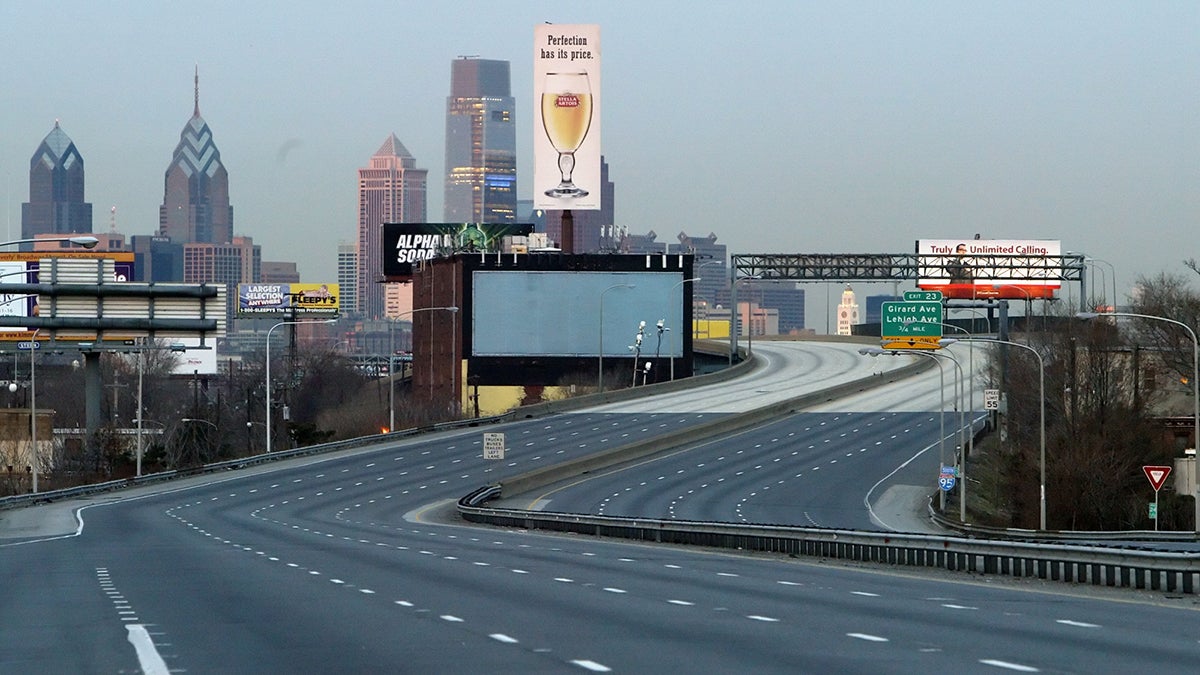Pennsylvania’s bridges are struggling with middle age

No, this isn’t a shot of Philadelphia after the zombie apocalypse: in 2008, a two-mile stretch of I-95 closed to allow for emergency repairs. An elevated part of the highway was supported by a pillar that had developed a four-foot crack. Pennsylvania ranks second in the nation for structurally deficient bridges. (AP Photo/Joseph Kaczmarek)
More than 3,000 bridges throughout the state have been deemed structurally deficient.
Heart palpitations, sweating, dizziness. For some people, crossing a bridge induces the same physiological responses as those experienced by an animal frozen in fear, said Dr. Rolf Jacob, a professor of psychiatry at Western Psychiatric Institute and Clinic in Pittsburgh.
“Just like having fear of flying because the airplane could crash, some people might avoid bridges because they are concerned about its structural safety,” he said.
Unfortunately, more than 3,000 state-owned bridges in Pennsylvania have been deemed structurally deficient. According to the American Road and Transportation Builders’ annual bridge report, released last week, Pennsylvania ranks second in the nation for bridges in need of maintenance. Which isn’t terribly surprising: Pennsylvania has the third largest state-owned bridge system in the country, and one of the oldest. About one in 10 of the state’s 31,000 state-and locally-owned bridges are structurally deficient.
Structurally deficient sounds worrisome, but it doesn’t mean a bridge is unsafe: it means one or more of the bridge’s major components — such as the deck or superstructure — requires maintenance. That can range from needing a new deck to a new coat of paint to prevent rust.
Making the top-five list for structurally deficient bridges isn’t something Pennsylvania is proud of. But taking second place instead of first is an improvement, said PennDOT spokesperson Rich Kirkpatrick.
“We hit a high back in 2008 of 6,034 structurally deficient bridges on our network of [state-owned] bridges. Now we’ve got that number down to 3,512. That’s a dramatic drop.”
Structures naturally deteriorate over time, and the average age of a bridge in Pennsylvania is 50 years or more.
Keeping the sprawling, aging system in shape is a constant challenge. But, “if a bridge is open in Pennsylvania, it’s safe. It’s been inspected. PennDOT takes very seriously its responsibility for the 25,000 bridges on the state-maintained system,” said Kirkpatrick.
Bridges are inspected once every two years. But once a bridge is found to be structurally deficient, inspections are stepped up. PennDOT can put a weight limit on a bridge, or close a span if need be. Safety is the first issue, but Kirkpatrick said they try not to limit or close bridges because it has a serious impact on the economy: truck drivers have to take the long way around, as do police and fire officials.
Residents of Philadelphia and New Jersey have nursed that particular headache since January. The Delaware River Bridge, which connects the two states’ turnpikes, closed for emergency repair after crews discovered a fractured steel beam. Philadelphia fills the top ten list for most-traveled deficient bridges in Pennsylvania.
Working to preserve bridges is more cost-effective than having to rebuild them. And as the state addresses its maintenance backlog, Pennsylvania is also working to modernize, said Kirkpatrick.
“With bridges that are being built or rehabbed now, the goal is to have a hundred-year design life. There have been advances in materials, and moving forward, our expectation is that once bridges are repaired, they will last longer than they have in the past,” he said.
WHYY is your source for fact-based, in-depth journalism and information. As a nonprofit organization, we rely on financial support from readers like you. Please give today.


